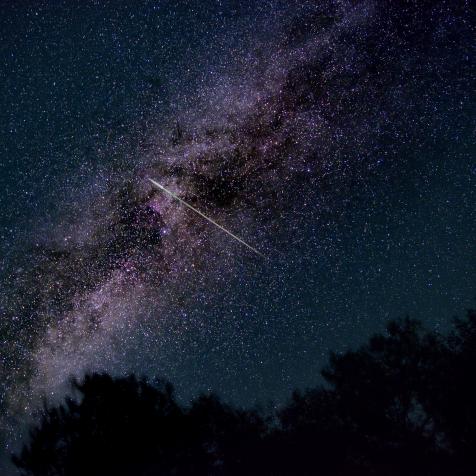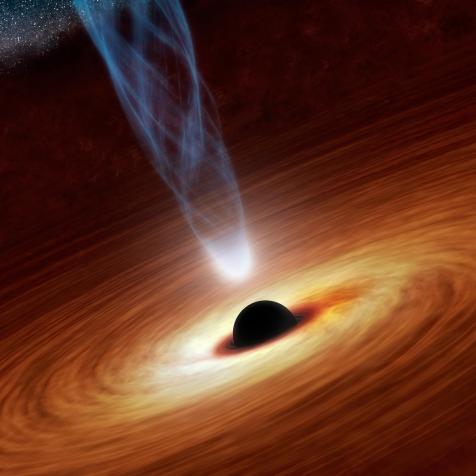
NASA/JPL-Caltech/SAO
The Latest Thing to Blow Your Mind: A “Black Widow” Binary

There are pulsars, and then there are binary pulsars, and then there are black widow pulsars. Because why can’t nature just stop?
Let’s start with pulsars, which given what we’re about to explore will seem utterly tame in comparison. Pulsars are the leftover hearts of giant stars. Not too giant – the biggest stars end up as black holes. But stars just a tiny bit smaller than that instead leave behind their ultra-dense cores, which are known as neutron stars.
The name is apt because neutron stars are objects a few miles across consisting almost entirely of pure neutrons. Normally neutrons are unstable and will decay away if left to their own devices, but the extreme gravity of the neutron star keeps them glued together. Neutron stars have the density of an atomic nucleus, making them essentially giant-sized atoms. The gravity around neutron stars is so extreme that can bend light into the path of a circle, forcing beams of radiation to orbit it. The tallest “mountain” on a neutron star is only an inch or so high. If you were to fall off that mountain, by the time you hit the bottom you would be traveling at half the speed of light.
So yeah, neutron stars are pretty intense. What’s even wilder is when they become pulsars. Many neutron stars spin rapidly (in some cases at rates of thousands of revolutions per minute, faster than a kitchen blender). While neutron stars are almost entirely neutrons, they do contain some charged particles, like protons and electrons. Whipped around at those incredible speeds, the charged particles generate a magnetic field, which can release beams of radiation shooting out into space.
This neutron star is known as a pulsar because it sends out rotating beams of X-rays that sweep past Earth like lighthouse beacons
As the beams of radiation wash throughout the universe, sometimes they intersect the Earth. We see them as periodic flashes of radio emission – a pulsar.
Usually over time pulsars gently spin down, with the beams of radiation carrying away energy as they go. But sometimes pulsars can find themselves in a binary system, orbiting another star or brown dwarf.
If that companion star wanders too close, the pulsar can siphon off some of the star’s atmosphere. Like pushing a kid on a merry-go-round, this can reaccelerate the rotation of the neutron star, bringing the beams of radiation back to life.
But those concentrated beams of radiation are rarely alone. When the pulsar heats up with so much energy, it just starts spitting out all kinds of intense radiation in all directions, like a giant x-ray bomb.
And this is where the “black widow” scenario comes up. If that companion is too close, the reenergized pulsar blasts it with its powerful radiation, which strips away the companion star’s atmosphere. Even though that companion breathed new life back into the neutron star, it pays the price for it by dying in the intense glare of the new pulsar.
Nature is not playing games.
Learn More about the Universe
Journey Through the Cosmos in an All-New Season of How the Universe Works
The new season premieres on Science Channel and streams on discovery+.














































































